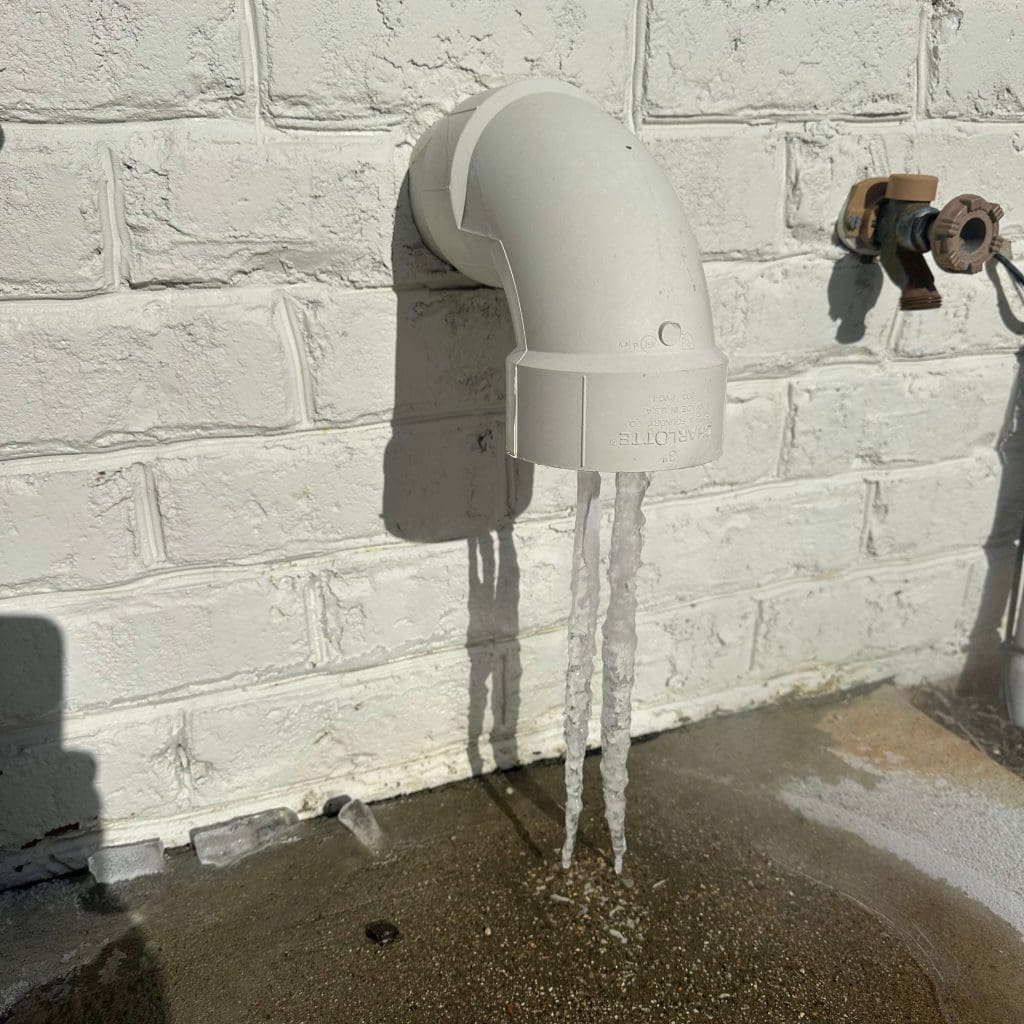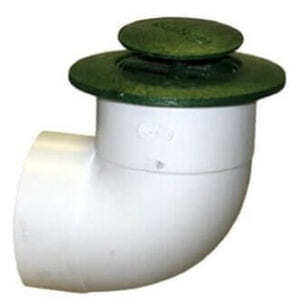
Wondering how to keep sump pump discharge from freezing? Insulate the discharge pipe using foam insulation or pipe sleeves to keep water flowing in cold temperatures. You can also install heat tape for extra protection. Extending the discharge line and ensuring proper drainage away from your foundation helps prevent ice blockages and keeps your sump pump working efficiently.
The purpose of a sump pump is to discharge water safely away from your basement and foundation. But when temperatures drop, frozen discharge lines can cause backups, leading to flooding and water damage. Winterizing your sump pump system is essential to avoid costly repairs - especially in the Midwest. In addition to rain, melted snow and ice can put extra pressure on your sump pump discharge system.
We often experience cycles of freeze, thaw, and re-freeze in this region, and these temperature fluctuations can block outdoor drainage pipes with ice obstructions. If the sump pump discharge hose freezes, it can force water back into your home.
You’re probably already familiar with letting a faucet drip to keep indoor pipes from freezing—but what about preventing a sump pump hose from freezing outside? Ice blockages in a discharge pipe can lead to costly water damage.
Insulating exposed sections, maintaining proper drainage, and winterizing your sump pump system can help keep water flowing even in freezing temperatures.
Table of Contents
Acculevel is a family-owned and operated company that has specialized in foundation repairs and waterproofing since 1996. We’ve helped more than 35,000 homeowners restore health and stability to their homes, installing reliable sump pump drainage systems designed to handle winter weather and prevent freezing.
In this blog, we’re going to review the best practices for installing and maintaining a sump pump discharge line. These tips will show you how to prevent sump pump discharge pipe from freezing and protect your home during winter weather.
When you install a sump pump, you also run a discharge line from the pump to the outside. This line is what drains the water away from your home. If the drainage line freezes, the ice in it will block water from draining.
Once the end of the drainage pipe is clogged or blocked with ice, the drained water from the sump pit gets backed up. Instead of draining water a safe distance from your home, the excess snowmelt and rain water collects inside your home and around your foundation.
Without the ability to properly expel the water, your sump pump will be running continuously, but failing to pump water out. Eventually, the pump will be overwhelmed and burn out, the space will flood, and you find yourself in the exact situation you were trying to prevent.
Keeping your sump pump discharge line from freezing is crucial to preventing water backups and protecting your home during winter. Follow these steps to safeguard your discharge pipes and hoses, and winterize your system to ensure continuous drainage in freezing temperatures.
The most effective way to prevent sump pump discharge pipe freezing is by insulating vulnerable sections. Use heat tape or foam pipe insulation to create a thermal barrier that reduces exposure to freezing air. Focus especially on outdoor sections and areas prone to drafts.
Heating cables provide an effective solution to prevent sump pump discharge pipe freezing. These cables wrap around the pipe, emitting gentle heat to keep water flowing even in freezing temperatures. They are ideal for outdoor sections and areas exposed to extreme cold, ensuring uninterrupted drainage.
Make sure the discharge line directs water well away from your foundation to reduce the risk of freezing near the house. For added protection, bury the pipe below the frost line to take advantage of the soil’s natural insulation. Alternatively, keep above-ground pipes sloped downward to prevent standing water from freezing.
A gradual slope ensures water flows freely through the discharge line. Gravity helps prevent standing water, which is more likely to freeze. Confirm that your system’s grading encourages continuous drainage away from your home.
Regular checks during winter help catch issues early. Clear snow and ice buildup from discharge outlets, inspect insulation, and verify that all connections are secure. Routine maintenance keeps your sump pump and discharge system running smoothly and prevents freezing problems before they arise.
Proper installation of a sump pump discharge line is essential for maintaining smooth water flow and preventing backups. In this section, we’ll walk through key steps to ensure your system is set up correctly and protected from common issues, including freezing and blockages.
You will need to make certain the drainage line is free of dips and curves (no high or low points), as these can interfere with the natural flow of discharge. It’s this natural flow that allows the pipe to completely drain, even after the pump turns off.
Low points will create ‘pockets’ that can hold water and allow it to freeze. In our experience, the best way to prevent this is to use a 2 inch diameter pipe. Most sump pumps only require a 1 ½ inch pipe, but a larger pipe is more rigid and less likely to compress or allow any dips to form.
The ground around your home should have a gentle downward slope away from your home. This is the easiest and most natural way to direct water flow in the right direction. This is important for two reasons.
You don’t want the water freezing inside the line, nor do you want it freezing just outside the line. Either instance will block the drainage from leaving your home.

A typical pop-up drain
At the end of your drainage line, attach a pop up drain. At Acculevel, we also drill three ½ inch holes in the bottom of the pop-up pipe as part of our installation process. We then set the pop up drain into a small pit filled with five gallons of pea gravel.
These extra holes help drain any water that might collect at the bottom, and having the water release into gravel helps disperse it more gradually. All of this makes the water less likely to form puddles or (in warmer weather) wash out your soil.
Preventing sump pump hose freezing outside is critical for maintaining effective drainage during winter. There are a few ways to protect exposed hoses, ensuring water flows smoothly and your pump system remains operational.
Sometimes, the actions you avoid taking are as useful as the ones you do!
Some contractors will install a freeze guard on the side of your house where the discharge line is routed. This is not something we do, nor do we advise you to do it. Freeze guards are overflow devices that attach to the drainage line as it exits the basement. It’s true that these allow water to escape if your drainage line freezes; but if this happens, the water will be released directly next to the foundation.
The entire purpose of the drainage line is to move the water away from your home, because otherwise, it will pool around your home and seep back into your basement or crawl space. This cycle will keep the sump pump running continuously, processing the same water over and over without the ability to properly discharge the water at a safe distance. Eventually, the pump will be overwhelmed and burn out, the space will flood, and… and this sounds... oddly familiar… probably because this is what we’re trying to prevent!
We recommend that a drainage line be at least 20 feet from your foundation; 10 feet is the absolute minimum. In general terms, the farther away the better- but like in most things, moderation is key. If your drainage line is 100 feet or longer, it will require the sump pump to work harder and shorten the life of the pump motor.
Many homeowners mistakenly think that the drainage line needs to be buried several feet down, below the frost line. This confusion is understandable; after all, we used the concept of ‘let the faucet drip’ at the beginning of this article as an example of good preventative measures.
But there’s a key difference between the water pipes running inside your home (used for drinking water) and a drainage line outside your home. The water lines inside your home need to be buried deeper underground because they hold water all the time. They have to, because when you turn on the tap, you expect water to flow immediately.
On the other hand, a properly installed discharge line only has water in it while the sump pump is running. When the pump expels the water from your home, it’s at a warmer temperature than the soil outside, and it’s moving quickly. This, combined with a good slope and well-installed drainage line, should be enough to keep it from freezing before it’s cleared the drainage area.
Do you have more questions about the components of waterproofing, drainage, or sump pumps? We have more to share on our blog, where we cover the other details of waterproofing basements and crawl spaces.
Do you think water is causing problems in your basement or crawl space? Maybe you’re not sure what the problem is, but you’ve noticed some issues around your house. If so, use our free tool for homeowners that walks you through different symptoms and possible solutions.
If you need professional advice, find an experienced local foundation company and make an appointment. Before you sign a contract for any service, you should always verify the company is reputable, insured, and accredited by the Better Business Bureau.
If you live in Indiana or the surrounding states, contact Acculevel! We will schedule an estimate for you with one of our experienced project managers. They will evaluate your home and recommend the best course of action for you, to keep your home strong and healthy for years to come.
[DISPLAY_ULTIMATE_SOCIAL_ICONS]